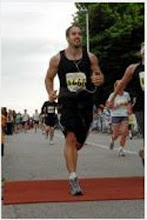Today's modernized society is drastically different from the environment that our ancestors evolved in. Modern
Homo sapiens, as we are scientifically referred to, have been about for 10,000 +/- years with modern physiology probably laid down in place as late as 40,000 years ago. Evolution rarely, if ever, happens in 1-2 generations = about 75-100 years life span of the modern Human. So what's happened? Why have modern, industrialized humans gotten fat? The answer is more complex than you might initially think. For example, the common answer to that question is: Our diets have changed to more fatty and sugary diets. True, but our ancestors likely scarfed down all the fat on the animals they killed and reaped rewards by harvesting high sugar, sweet fruits and things like honey. Others will say: It's the artificial substances added to our diets. Probably also true, but as noted above, 1-2 generations would be unlikely a time period for evolution of fatties to occur. What some scientists predict has happened is that combined with our high calorie (although likely no higher than our ancestors' and maybe lower) and a newly founded sedentary lifestyle (television, playstation, board games, etc) we have developed, not evolved to be fatties. Our ancestors (think cave man) were not all that sedentary. Hard to be still and lazy when you've got to feed your whole family, maybe part of a larger tribe, all of whom are counting on you for sustenance and their own survival. Hard to do when avoiding predators is a daily task. Being eaten makes evolution really hard!
The hypothesis, and one I like, suggests that our bodies have a set of yet unidentified genes associated with, or 'activated' by, exercise. These researchers suggest that exercise, especially when started at a young age, turn on genes that help the body efficiently store and use energy (i.e. food). In fact, they even suggest that one way to explain super athletes, of which I am not, is that they posses so-called "thrifty" genes; genes, or more likely a suite of genes, that are better than average at utilizing energy for oxygen consumption and expenditure of ATP. This would explain why, train all you like, you are unlikely to ever jump as far as Carl Lewis or swim as fast as Michael Phelps. Just ain't gonna happen! Critics, probably fat critics, would argue that this is another attempt on the part of the scientific/evolutionary community to put forth the idea of genetic determinism: that you are your genes and nothing more. Nothing could be further from the truth. Think about it medically. Some people posses a suite of genes that make them more likely to develop heart disease or lung disease. If they smoke and eat McDonalds daily then those genes actually get turned on overdrive and, low and behold, the person develops the disease(s). Take mental illnesses for another example. Some people posses genetic predisposition to being anxious. They develop fears easier than the rest of us. They worry about almost everything and it can sometimes become debilitating to their daily existence. This is the premise of gene X environment interactions.
So why can't their exist genes that are designed to interact with our environment in a way that makes our musculo-skeletal physiology develop in certain ways? Plain and simple: There are! So, moral of the story: eat your Wheaties, but exercise too! Move your body in any way you can. Turn on those genes so that you can be fitter! Even a little movement can count towards activating your genes for fitness. Try standing up to turn the tele on / off. You will burn way more calories by lifting and moving your body weight than you will by sitting there pushing remote control buttons. I have another idea - drop the playstation controller and get out and do it! Don't play Madden '09, FIFA, or Hockey - get outside and join an intramural team. Get your sweat on, just don't get hurt.
This post comes by way of hearing a few people complain that they are overweight because they "just couldn't find the time" to exercise, join a team, make the game, etc. excuses! This drives me crazy! Fitness is a lifestyle for my wife and I, but from an evolutionary perspective fitness is a lifestyle for our species! We were not designed to sit around the water cooler discussing who did what on Lost or Heroes. Our ancestors (that's about 4 million years of evolutionary history) were forced to be active to survive. This is probably the reason that so many o us that engage in an active lifestyle actually find it rewarding and somewhat addictive; our bodies miss being active when we don't move. This, and I hypothesize here, may be our evolutionary history saying - what the fuck are you doing? Don't you fucking know that if you sit on your ass a predator is going to eat you? Don't you fucking know that the fat dudes don't get laid? Your body, and I am saying: Get the fuck up and MOVE!!!!







